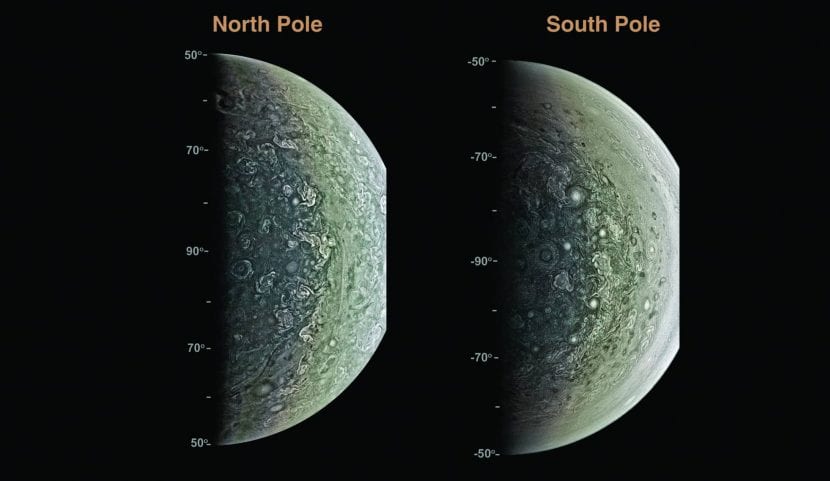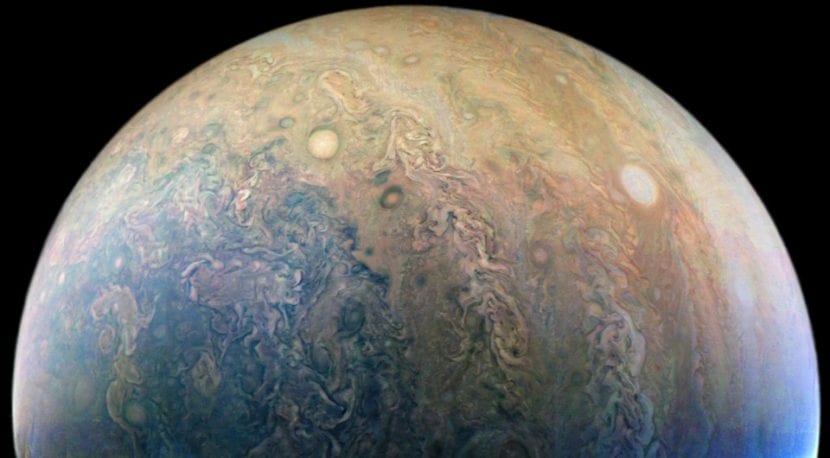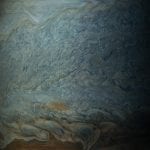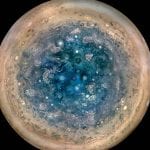
The two poles of Jupiter taken by the probe »Juno».
Image - NASA
For the first time in the history of mankind, we can observe from the living room of our houses the poles of Jupiter, a gaseous planet that is located at a distance of approximately, neither more nor less, than 588 million kilometers. And all thanks to NASA, and more specifically to its space probe "Juno".
In the images he has taken you can see a veritable plague of oval-shaped cyclones that have a behavior and composition that has not been seen so far on any other planet in the Solar System. At the North Pole gigantic storms, 1.400 kilometers in diameter, have been discovered.

Image - Craig Sparks
Although there are not only impressive storms, they have also seen a cloud measuring about 7.000 kilometers in diameter that is well above the rest at the North Pole. At the moment, it is not known how such incredible phenomena can be formed; However, when studying the data on the temperatures of the inner layers of the atmosphere it has been possible to find out large amounts of ammonia emanating from deeper areas contribute to their formation.
The space probe »Juno» has been the first to be able to observe the shower of electrons falling into the atmosphere, which creates the intense northern lights of the gaseous planet. A decade ago NASA's Pioneer 11 probe passed 43.000 miles above the clouds, but "Juno" has come ten times closer, so scientists have not found it difficult to measure the intensity of the magnetic field. The result has been 7.766 gauss, double what was calculated until now. To get an idea of what happens on the gaseous planet, we must know that the intensity of the Earth's magnetic field is 100 gauss, which is roughly equivalent to the attraction of a bar magnet inclined 11 degrees with respect to the axis. rotation of the globe.
- Storm on the planet Jupiter. Image - NASA
- South Pole of Jupiter, taken by »Juno». Image - NASA
Juno, the size of a basketball court, is a spaceship that use only solar energy captured by large panels. The cameras and the rest of the scientific equipment are shielded with titanium so that they are well protected from the radiation emitted by Jupiter. But his "suicide" is scheduled: it will be on February 20, 2018, when he enters the outer layers of the atmosphere to find out if there is a rocky core as has been believed for a long time. If so, and since Jupiter was the first planet to form, could clarify to scientists what types of materials existed in the early Solar System.
If you want to see more pictures, Click here.

